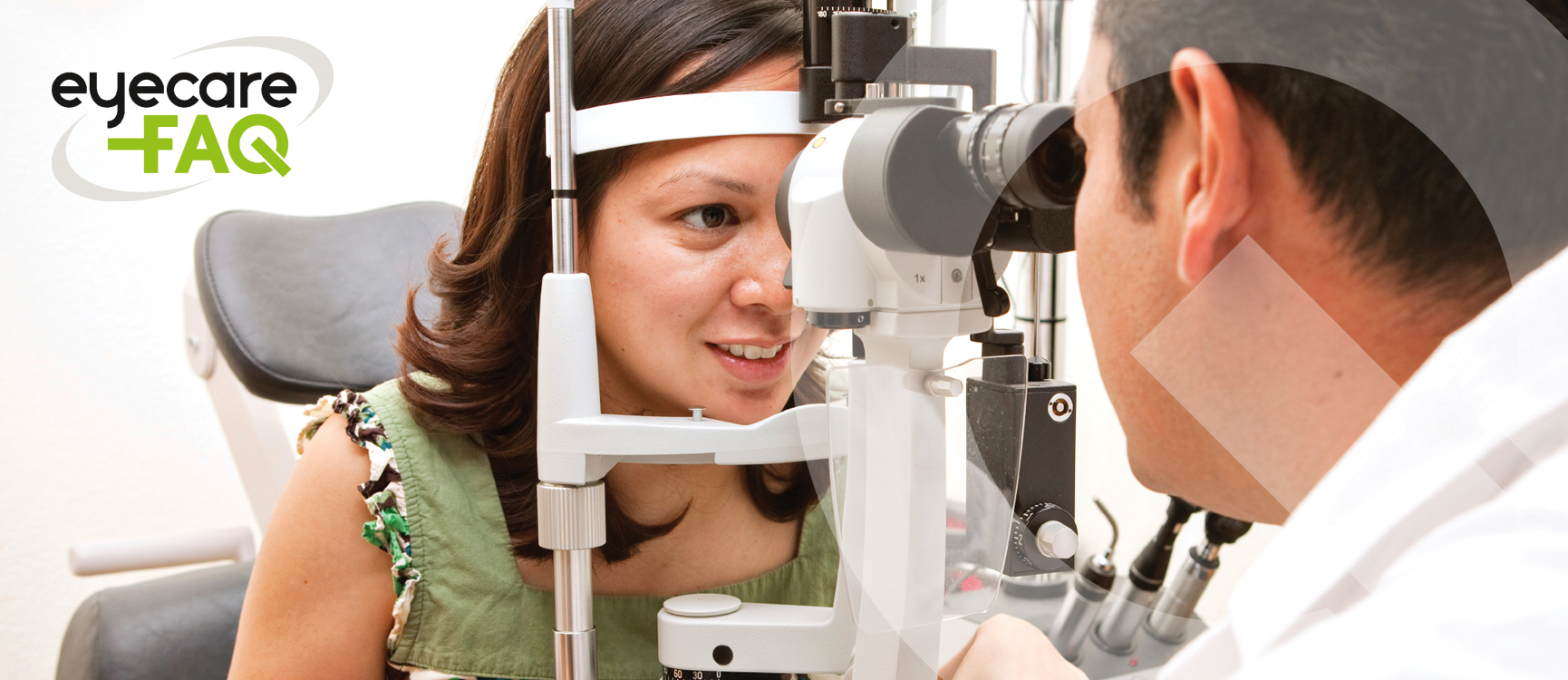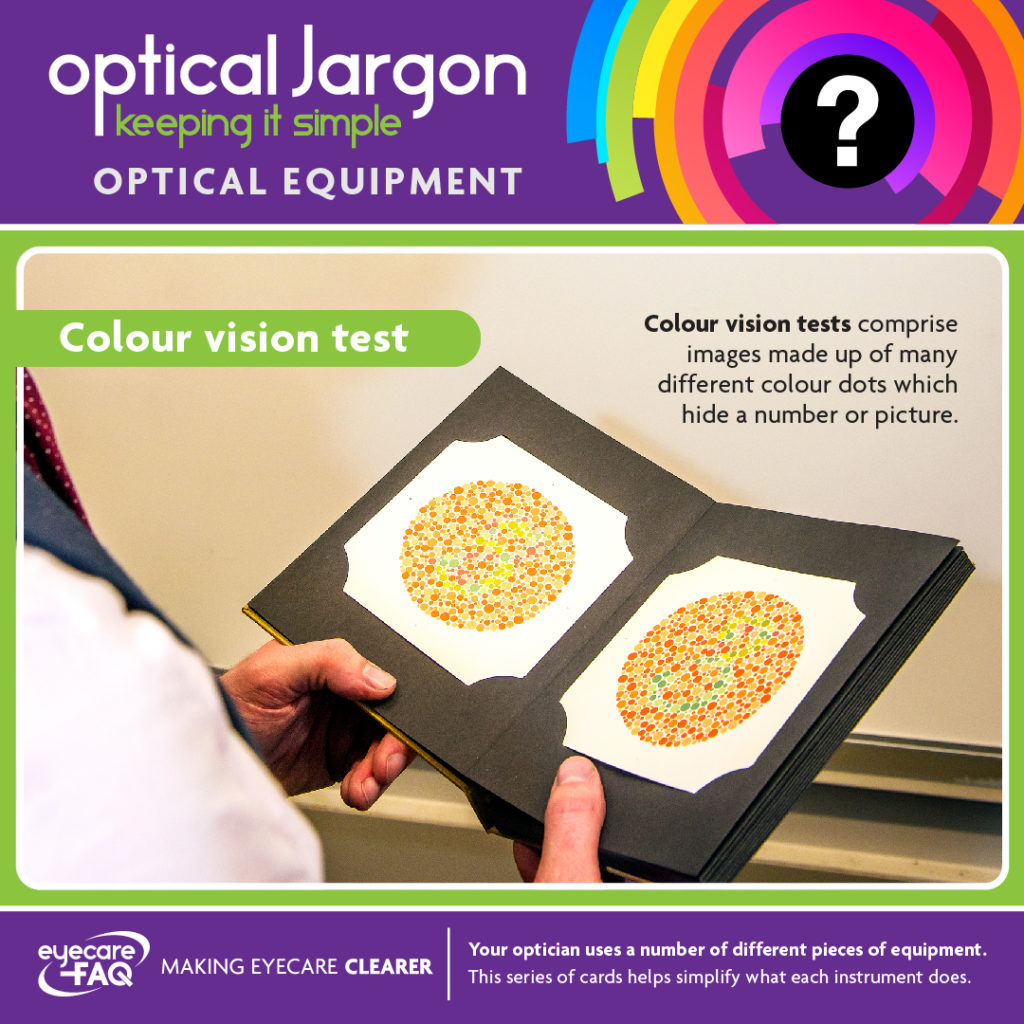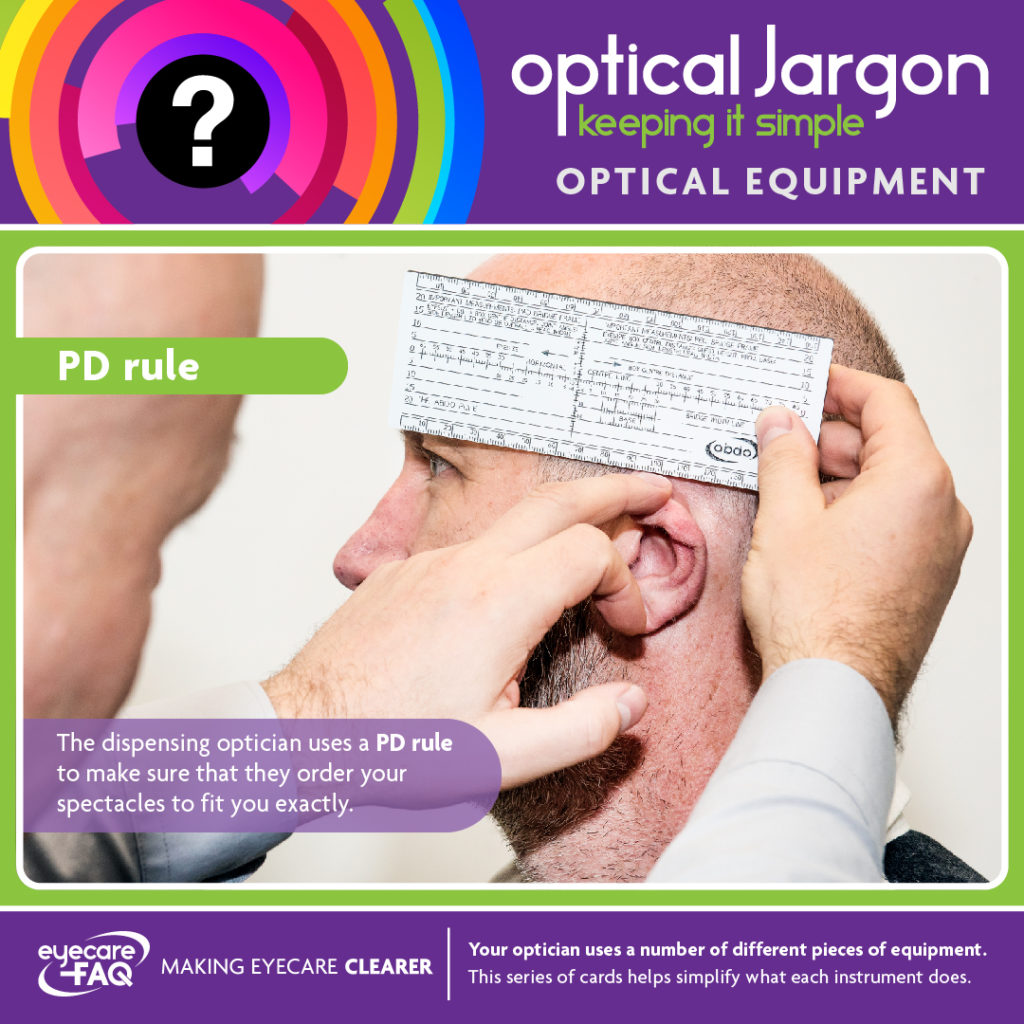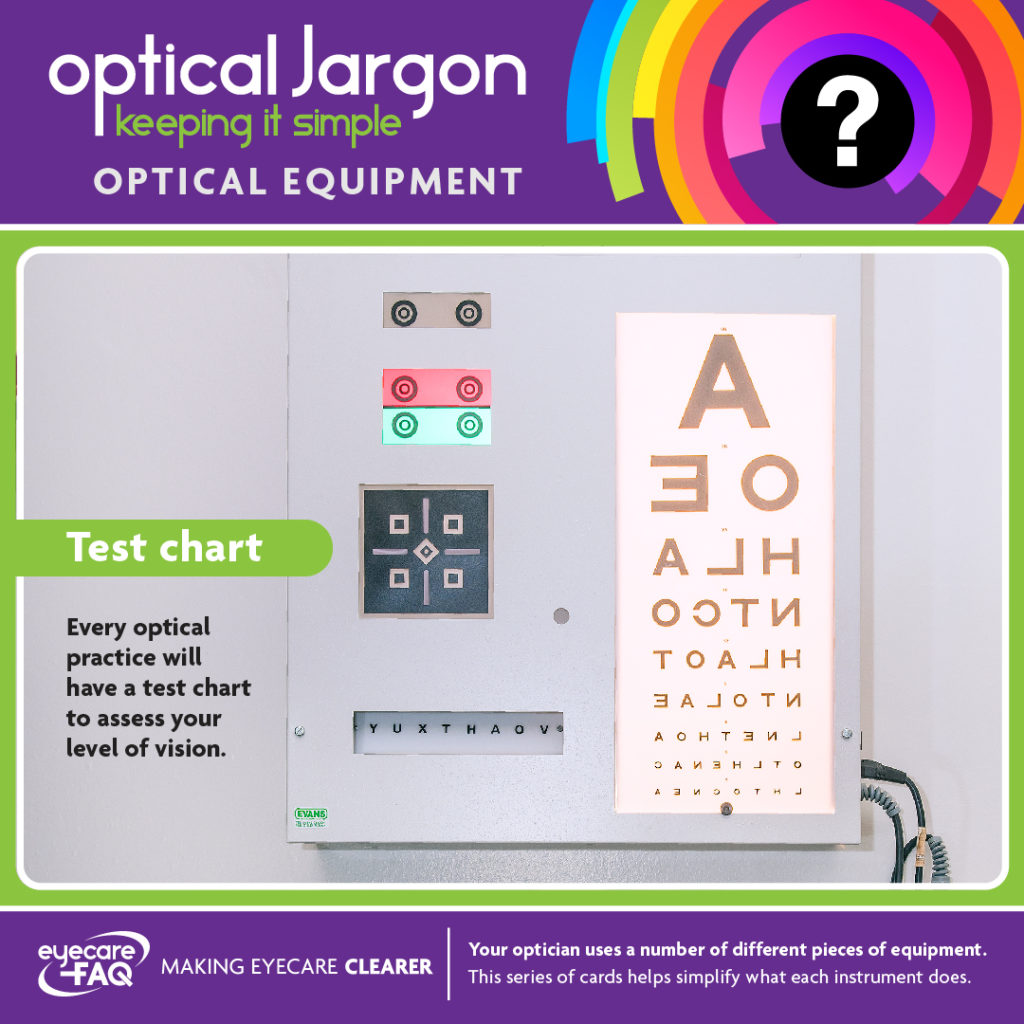Autorefractor
An autorefractor may be one of the first pieces of equipment you will meet when you go for an eye test. An optical assistant or other member of staff will ask you to place your chin on a rest and look into a machine at a small picture. The machine then automatically assesses how long or short sighted you are. The optometrist can then use this information as a starting point for determining the strength of specs that you need.
Bead Bath Heater
A bead bath heater allows the dispensing optician to gently warm spectacle frames so that they can be adjusted to fit your face.
Binocular vision tests
Although for many of us our eyes work effortlessly as a pair, some people have problems with ‘binocular vision’. There are various tests that assess how well your eyes work together at distance and near. On a simple level the optometrist may ask you to look at a letter and then cover/uncover each eye in turn. They may put polarised lenses in front of your eyes, ask you to look at red bars of light, and tell them if they move to the left or right, or up or down.
Burton lamp
A Burton lamp is a portable hand held UV light which allows a contact lens optician to assess the fit of your contact lenses.
Colour vision test
Every optical practice will have a colour vision test. Generally, this test comprises images made up of many different colour dots which conceal a number or picture. Different colour combinations will detect the different types of colour vision deficiency.
Digital dispensing/measuring device
There are different sorts of digital devices that assist the dispensing optician in measuring the optimum position for your spectacle lenses. These measurements now allow for unique lenses to be made to your specific measurements and prescription, with minimal thickness or distortion.
Digital fundus camera
A digital fundus camera is a piece of equipment that is present in an increasing number of high street optical practices. It allows the practitioner to take a photograph of the back of your eye, providing a lasting record of your eye health that can be compared at your regular eye tests.
Facial gauge
A facial gauge allows a trained dispensing optician to make numerous measurements to ensure that your spectacle frame and lenses fit your face.
Field screener
There are many different types of field screener, but they all assess your visual field. Generally, you are asked to put your chin on a rest and shown a varied number of small dots of light, and asked to let the practitioner know how many you can see. This allows the screener to create a picture of your ‘all round’ vision. This helps detect very early signs of conditions like glaucoma, and can also pick up undetected rare problems such as brain tumours.
Fluorescein
Fluorescein is a bright yellow/orange dye that shines green under UV light. It is used in a number of ways: to assess your tear film, to assess any damage to the clear surfaces of the eye, and to evaluate the fit of contact lenses.
Focimeter
A focimeter is a small desktop piece of equipment that the optician uses to check the strength of your existing pair of spectacles, and to verify new spectacles once made to ensure they match the required specifications.
Frame heater
Did you know that a pair of specs needs to be adjusted to fit you? In every optical practice the dispensing optician will use a frame heater to warm up spectacle frames until they are pliable so they can be adjusted to the exact dimensions of your head and face.
Keratometer
A keratometer measures the curve of the front of your eye. Traditionally it has been used to fit contact lenses, ensuring that the curve of the lens matches the curve of your eye. It also allows the practitioner to assess the quality of your tears and whether there are areas of corneal irregularity. Some practices now have a corneal topographer which plots out the whole surface of the front of the eye, making it much easier to create custom lenses.
OCT
An OCT (Optical coherence tomographer) is a large piece of equipment that uses light waves to take cross-section pictures of your retina, the light-sensitive tissue lining the back of the eye. You place your chin on a rest and fix your gaze on a target. The practitioner is able to get a magnified high quality image of the back of your eye, which can show signs of eye disease at an early stage.
Ophthalmoscope
A vital part of the eye test is when the optometrist checks the health of your eye. In order to do this many optometrists, use an ophthalmoscope, a hand held ‘torch’ which has special lenses that allow the practitioner to examine the back of your eyes. This can show them the blood vessels and nerve fibre layer that make up your retina, and can display signs of conditions such as diabetes and high blood pressure.
Pachymeter
A pachymeter is a medical device used to measure the thickness of the cornea, the clear layer at the front of the eye. It can be used before laser surgery for better vision, to check for conditions such as keratoconus.
PD rule
A PD rule is used in one form or another every time you buy a new pair of specs. The dispensing optician may hold a small white ruler up to your face to measure the distance between your eyes. Every person’s face is different – some people’s eyes are even at different heights – and it is critical for good vision to ensure that the centre of each spectacle lens matches the centre of your eye. A registered dispensing optician will use a PD rule to make sure that they order your spectacles to fit you exactly.
Pliers
In every optical practice you will find pairs of pliers in all different shapes and sizes. These are specifically designed to adjust spectacles without damaging them. Don’t use pliers from your toolbox as they may damage your specs – adjustment is definitely best left to the dispensing optician.
Pupillometer
A pupilometer measures the distance between your eyes, so spectacle lenses can be centred accurately, and your specs are exactly right for you.
Refractor head
In more and more optical practices you will find a refractor head, a large piece of equipment that is suspended in front of your eyes for part of the eye test. Inside it there are all different strengths of optical lenses that the optician will combine to find the best combination for you.
Retinal imaging equipment
Retinal imaging equipment allows the optometrist to examine the cell layers at the back of your eye. The equipment provides a cross section image, using light waves. It can show a trained professional if you are in the early stages of conditions such as glaucoma. A permanent record is kept and changes can be monitored from year to year.
Retinoscope
At the start of your eye exam the optometrist may use a small hand held torch called a retinoscope. This shines a bar or circle of light onto your eyes. Working at arm’s length the optometrist can assess the way the light moves and estimate how long or short sighted you are. This is particularly important for people who can’t communicate.
Slit lamp
You may come across a slit lamp for a number of reasons as part of your eye test. A slit lamp shows the front of the eye in microscopic detail. If you wear contact lenses the optician can use it to assess the health of your eye before and after contact lens wear. A slit lamp is also used if you attend with a sore or red eye, and can show tiny areas of damage. It can also be used to assess your tears if you have dry eye.
Test chart
Every optical practice will have a test chart to assess your level of vision. Nowadays the majority of charts are electronic, with built in illumination, and many are computerised, allowing the optometrist to easily change the size of letter that you can see. Charts are also available with simple shapes or pictures for those who can’t read letters.
Tonometer
A tonometer is used to measure pressure inside your eye. Some tonometers are small and hand held, while others are bigger and may be wall mounted. Some use a puff of air to assess the pressure, while others use a small probe that touches the surface of your eye for a second.
Topographer
A corneal topographer shows the contact lens optician the shape (topography) of the front of your eye, allowing them to achieve the best fitting contact lenses. The shape of your cornea is also important if you want overnight wear lenses to control shortsightedness. The topographer allows a permanent record of the shape of the cornea to be made.
Trial Frame
A trial frame is used to hold trial lenses while the optometrist assesses how long or short sighted you are and measures your degree of astigmatism.
Volk lens
A volk lens is used to give a magnified view of the back of your eye. You need to place your chin on the rest of a slit lamp (link to info on slit lamp) and the practitioner will hold the lens up to your eye and shine a bright light so they can assess your eye health.




